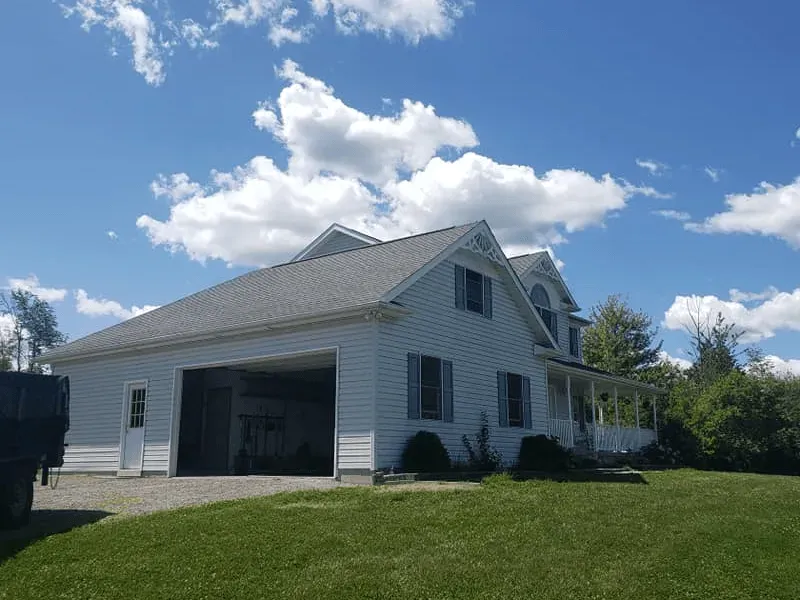Introduction
Storms can wreak havoc on homes and businesses, leading to severe damage that often requires immediate attention. Whether it’s high winds, hail, or torrential rain, the aftermath of a storm can leave property owners feeling overwhelmed. Understanding efficient methods for storm damage assessment and repair is crucial for mitigating risks and restoring properties to their original condition. This article will delve into various strategies, best practices, and essential services that can help you navigate the complexities of storm damage repair.
Efficient Methods for Storm Damage Assessment and Repair
When it comes to assessing storm damage, efficiency is key. The faster a property owner can identify issues, the quicker they can engage licensed roofing contractors or other specialized services to address repairs. Here’s a comprehensive look at efficient methods used for storm damage assessment:
1. Initial Inspection of Storm Damage
Before any repair process begins, an initial inspection is vital. Property owners should conduct a thorough examination of their roofs and surrounding areas.
A. Visual Assessment
Start with a visual check from the ground. Look for missing shingles, sagging areas, or debris accumulation.
B. Use Binoculars
For hard-to-reach spots or elevated roofs, binoculars can help identify potential problems without risking personal safety.
2. Engaging Certified Roofing Contractors
Once you've identified possible damages through an initial inspection, the next step is to engage certified roofing contractors who specialize in storm damage repair.
A. Importance of Licensing
Always ensure the contractors are licensed. This guarantees that they meet local regulations and standards for safety and quality.
B. Checking Credentials
Verify if your contractor has certifications and positive reviews from previous customers to ensure you're hiring one of the best roofing contractors available.
3. Roof Inspection Services
Professional roof inspection services often employ advanced techniques such as drones or roofing services infrared cameras to detect hidden damages that might not be visible during a manual inspection.
A. Drone Inspections
Drones provide aerial views of your roof without putting anyone in harm’s way, allowing inspectors to spot issues like hail damage or wind damage effectively.

B. Infrared Imaging
Infrared imaging detects temperature differences in roofing materials which indicate moisture retention—a potential sign of leaks or structural issues.
4. Documenting Damage for Insurance Claims
After identifying all damages, documentation becomes crucial for filing insurance claims.
A. Photographic Evidence
Take clear photographs of all damaged areas and compile them systematically for easy reference during the claims process.
B. Written Notes
Document specific details about each issue—date noticed, type of damage (e.g., roof leak), and location on your property—to provide comprehensive evidence for your insurance company.
5. Emergency Roofing Services
In cases where storm damage poses immediate risks (like compromised structural integrity), engaging emergency roofing services is critical.
A. Temporary Roofing Solutions
These services might include tarping over leaks or providing temporary roof support until permanent repairs can be made.
B. Rapid Response Teams
Many licensed roofing contractors have emergency response teams ready to assist immediately after severe weather events.
6. Roof Leak Detection Techniques
Understanding how to detect roof leaks efficiently helps prevent more extensive water-related damages down the line.
A. Water Testing
By simulating rainfall on specific areas suspected of leaking, professionals can pinpoint exact locations where water enters your home.
B. Moisture Meters
Using moisture meters allows contractors to assess moisture levels within roofing materials accurately—essential information when deciding on repairs needed.
7. Evaluating Roof Repair Services
After assessing damages, property owners need to evaluate various roof repair services available in their area:
A. Comparing Estimates
Obtain multiple estimates from different companies detailing the work required as well as costs involved—this ensures transparency and fair pricing during negotiations.
| Service Type | Average Cost | |---------------------------|------------------| | Roof Leak Repair | $300 - $1,000 | | Roof Replacement | $5,000 - $10,000 | | Emergency Roof Repair | $500 - $2,500 |
B. Warranty Information
Request warranty details on both materials used and labor provided; this protects you against future issues related directly back to repairs done today!
FAQs about Storm Damage Assessment and Repair
1. What should I do immediately after a storm?
- Conduct a visual inspection of your property. Look for obvious signs of structural damage. Contact licensed roofing contractors if you suspect significant issues.
2. How much does roof repair typically cost?
The average cost varies based on factors like location and extent of damage but typically ranges from $300 to over $2,500 depending on severity (e.g., simple patching vs full replacement).
3. How long does it take to assess storm damage?
An initial assessment usually takes around 1-2 hours depending on property size; however arranging professional inspections may take longer due scheduling availability etc..
4.Will my homeowner's insurance cover storm-related damages?
Most policies cover certain types but review your specific policy's terms regarding coverage limits & deductibles!
5.Could I perform these assessments myself?
While DIY inspections are possible it's recommended engaging certified professionals as they have experience detecting hidden issues & using appropriate technology effectively!
6.What are common signs my roof has been damaged by storms?
Missing shingles; sagging sections; leaks inside home; water stains along ceilings/walls could all indicate potential problems needing urgent attention!
Conclusion
Efficient methods for storm damage assessment and repair involve a combination of proactive measures taken by homeowners alongside professional expertise provided by qualified roofing contractors. Whether dealing with minor repairs like flat roof repair or major replacements due hail storms hitting hard—understanding roofing contractors how best approach these situations prevents further complications down road! By following structured processes outlined above while leveraging services offered by certified professionals ensures both peace-of-mind throughout recovery journey & ultimately restoring properties safely back up-to-standard conditions!